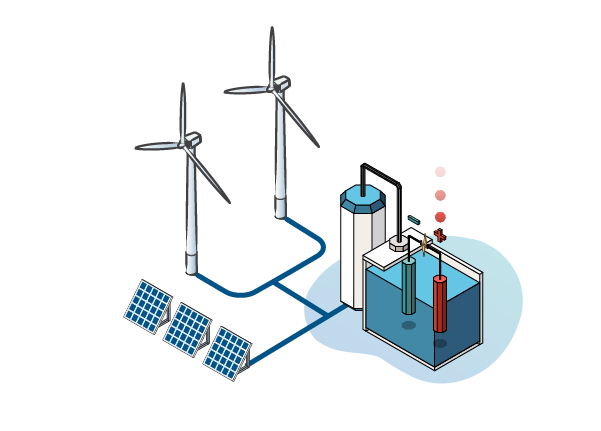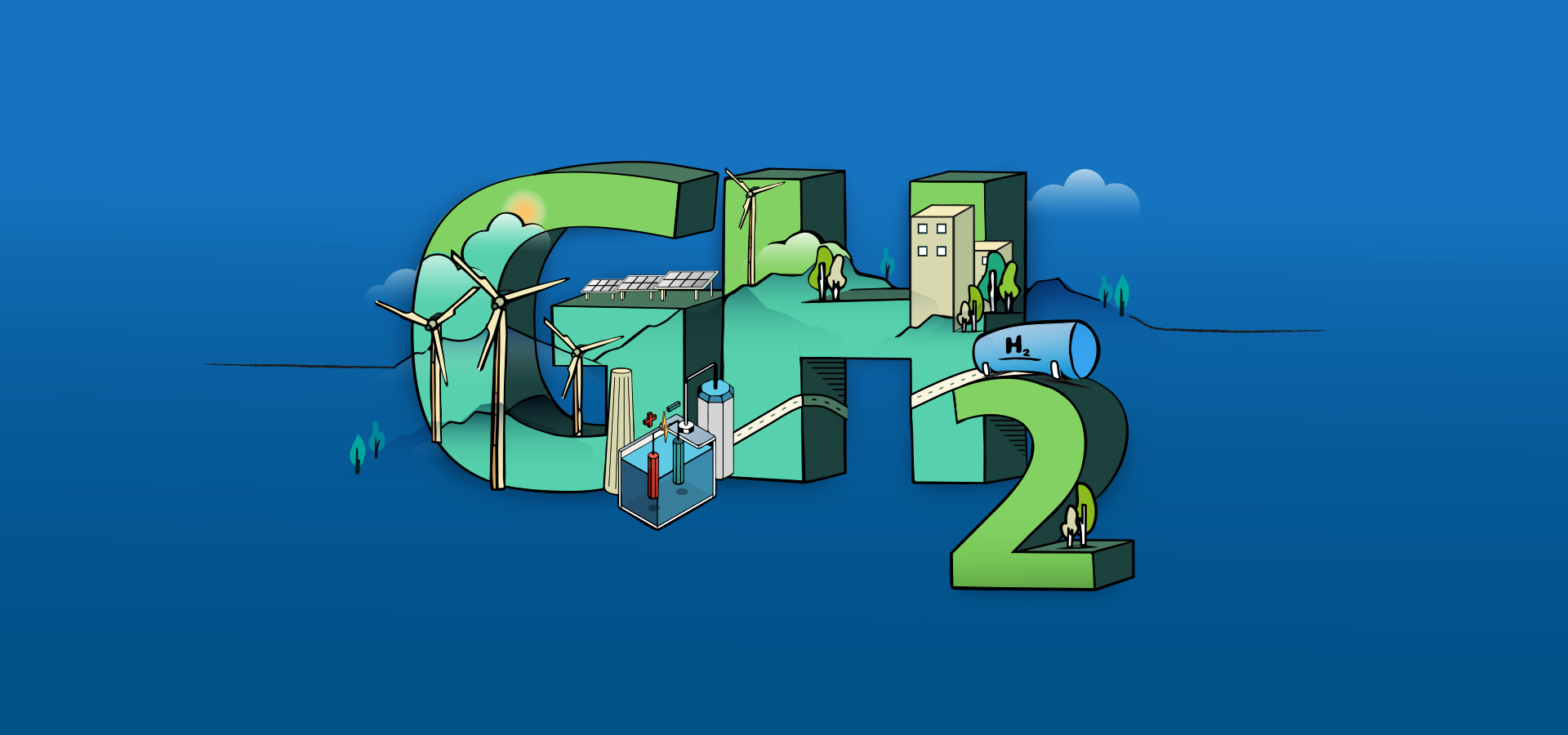Green Hydrogen: Go Clean To Go Big on Decarbonization
Connect the hydrogen value chain on a unified platform to decarbonize end-to-end operations for a low-carbon future.
The International Renewable Energy Agency forecasts that hydrogen will cover 12%1 of global energy demand by 2050 and cut carbon emissions by 10% in a net zero scenario. As it stands, around 94 million tons2 (Mt) of hydrogen gas is produced annually, containing energy equal to 2.5% of global energy consumption.
With mounting pressure to produce and use energy responsibly, replacing fossil fuels with renewable energy sources for hydrogen processes is integral. This urgency is underlined by the feature of low-emission hydrogen, particularly green hydrogen, as a clean energy vector in all eight of the European Commission’s projected net zero scenarios for 2050. Read our guide and learn how to expedite and optimize energy transition initiatives.
Transition To Clean Energy With Green Hydrogen
Discover strategies to decarbonize hydrogen, mitigate emissions and achieve carbon neutrality.
What Is Green Hydrogen?
"Green hydrogen, also known as GH2, is a clean hydrogen that’s produced by splitting water into hydrogen and oxygen through electrolysis. This process is powered entirely by renewable energy sources such as solar, hydro, tidal or wind power,” explains Clara Wiltberger, Industrial Equipment Industry Sales Strategy Associate at Dassault Systèmes.

Green hydrogen is a versatile energy carrier that can be applied to decarbonize multiple sectors with high energy intensity. It forms a cornerstone of the shift away from fossil fuels in industries where emissions are hardest to abate and other mitigation measures may not be available or would be challenging to implement.
According to the World Economic Forum3, a decarbonized energy system requires both clean electrification and low-carbon fuels. To reach net zero by 2050, current hydrogen production needs to be decarbonized and scaled to around six times what it is today. Enter green hydrogen, which does not generate carbon dioxide into the atmosphere, making it a potential low-carbon fuel with multiple benefits, including:
- Energy security
- Industrial competitiveness
- Carbon emissions reduction
A Unified Platform to Decarbonize Hydrogen
Implementing a clean energy initiative from the ground up requires mitigating carbon-intensive processes from start to finish while managing costs. As such, all green hydrogen value chain processes – from hydrogen production to storage and distribution – must be optimized. This is where the 3DEXPERIENCE® platform delivers value.
For example, industry leaders McPhy Energy and Visiativ leverage the platform’s virtual twin experiences and product lifecycle management (PLM) to drive their green energy transition. Through the platform’s unified architecture, these industry leaders will leverage knowledge and know-how across the enterprise to:
Standardize processes and design and simulation applications
Centralize data and project management
Facilitate team interactions across global sites
As the single source of truth, Dassault Systèmes’ 3DEXPERIENCE platform provides full visibility in real time. Furthermore, the platform supports digital continuity to enhance collaboration, streamline processes and optimize green hydrogen systems to be safer, more efficient and sustainable.
1Source: “World Energy Transitions” by Irena
2Source: “Global Hydrogen Review 2022” by IEA
3Source: “Action on clean hydrogen is needed to deliver net-zero by 2050” by World Economic Forum
FAQ About Green Hydrogen Production
Related Content
Clean Energy Technologies: Powering Up Innovation
Learn how you can revolutionize low-carbon technologies with an innovative platform
Innovative Electrolyzers for Green Hydrogen Production
In a four-part series, experts reveal how the virtual twin delivers electrolyzers of the future to meet the demands of green hydrogen production.
Designing Tomorrow’s Green Hydrogen Infrastructure
The demand for hydrogen is rising, and the race is on to capitalize on this. But are companies’ infrastructure well-equipped to handle the demand?
The Power Plan for a Smooth Energy Transition
Backed by innovative solutions, extensive experience and concrete strategies to decarbonize global energy systems, we aim to energize your transition initiatives and catalyze sustainable change.




